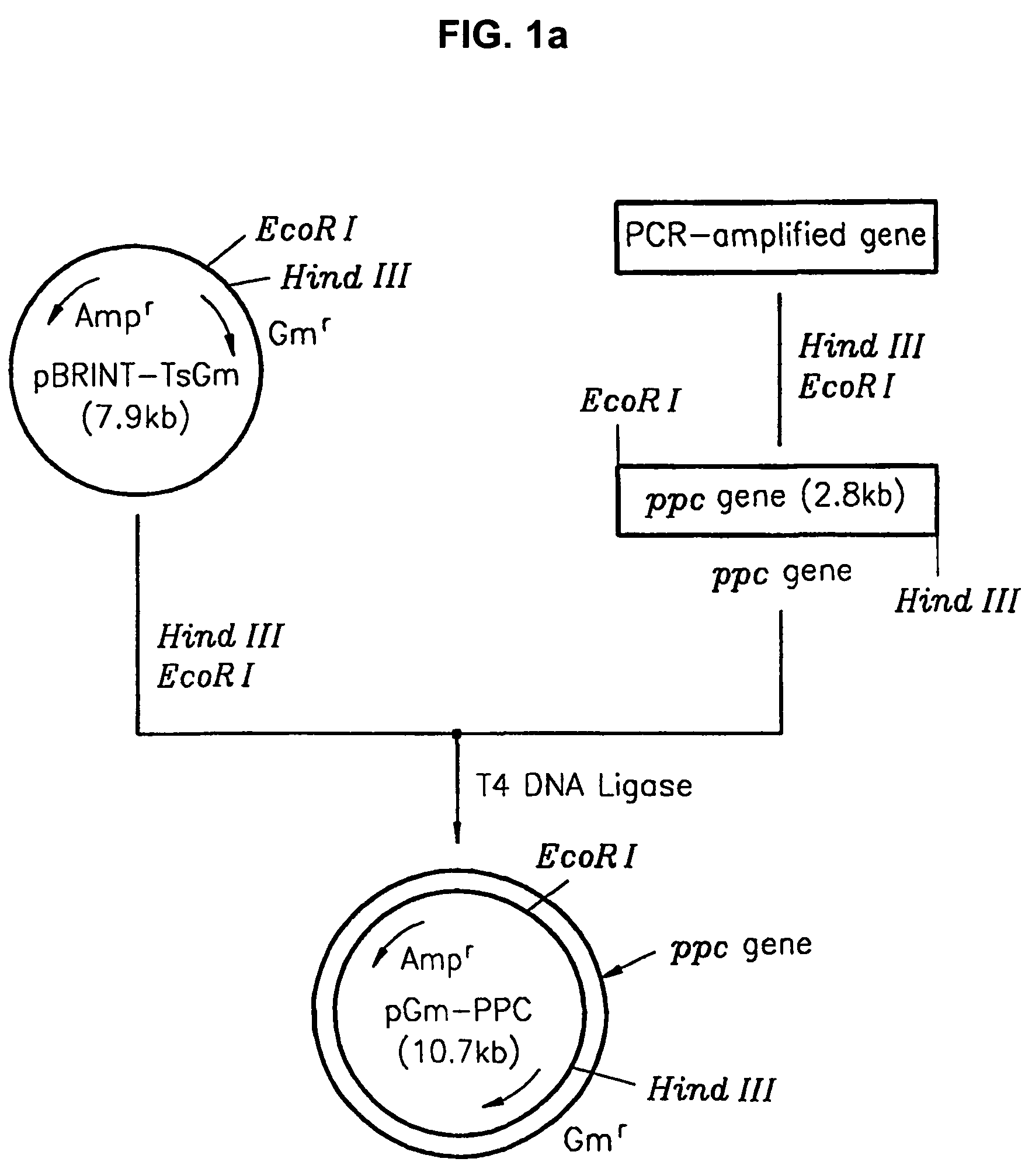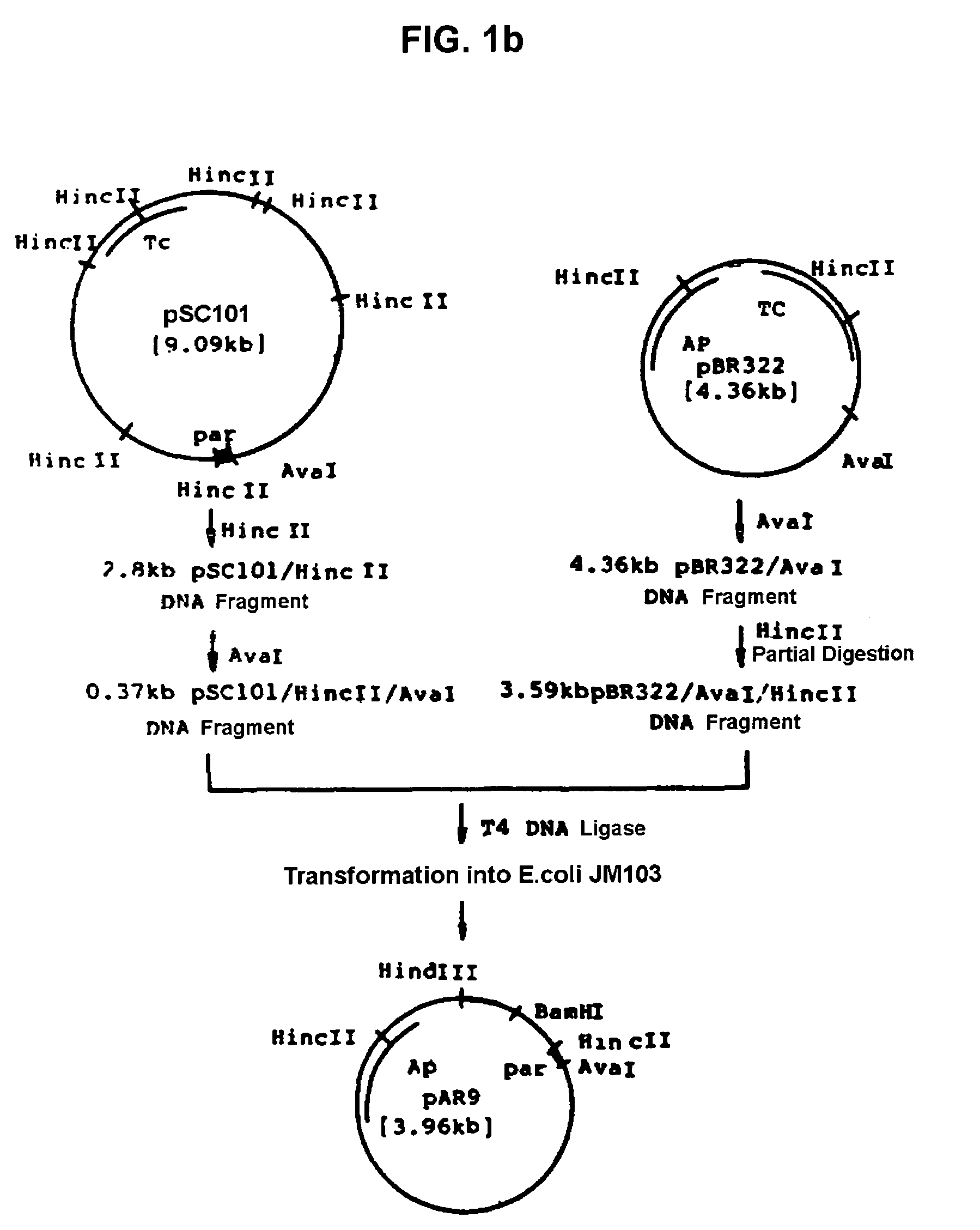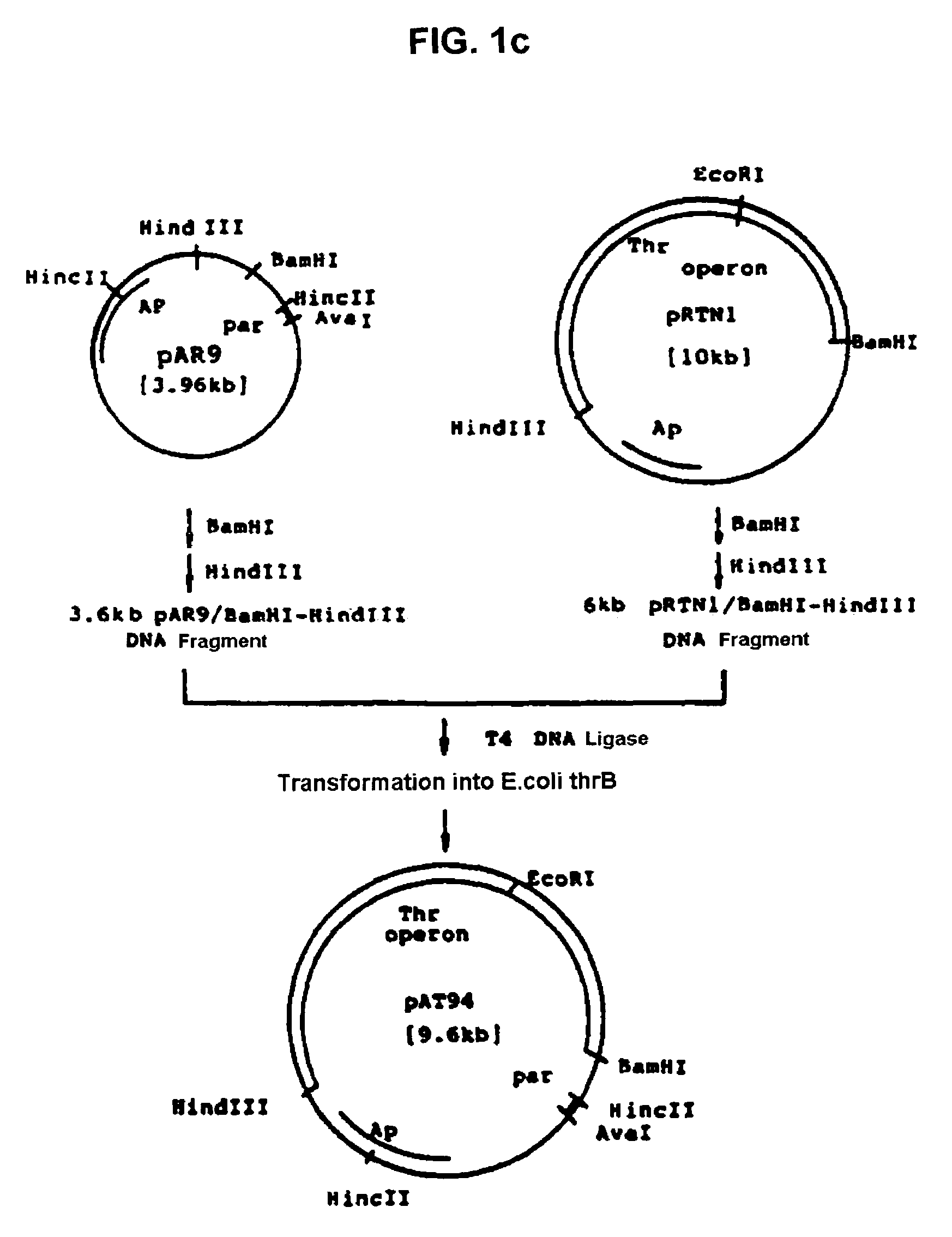Method for L-threonine production
a technology of lthreonine and production method, which is applied in the field of lthreonine production, can solve the problems of plasmid loss, difficult to increase the yield of primary metabolites, and hardly expected to significantly increase the expression of the threonine operon gene, so as to eliminate the problem of plasmid instability, increase the expression of the phosphoenolpyruvate carboxylase (ppc) gene and the threonine oper
- Summary
- Abstract
- Description
- Claims
- Application Information
AI Technical Summary
Benefits of technology
Problems solved by technology
Method used
Image
Examples
example 1
Cloning of Phosphoenolpyruvate Carboxylase Gene
[0036]The process of cloning the phosphoenolpyruvate carboxylase (ppc) gene is illustrated in FIG. 1A. The ppc gene was obtained from a threonine producing strain, TF 4076 (Accession Number KFCC 10718) deposited with the Korean Culture Center of Microorganisms (KCCM). The threonine producing strain, TF 4076, was produced according to the following procedures. Escherichia coli wild-type strains (E.coli W3110) (NEB, KoramBioTech, Korea) were suspended in a phosphase buffer (pH 7.0) or a cistrate buffer (pH 5.5) and artificially. mutated by adding 100-500 mg / l of N-methyl-N′-nitro-N-nitrosoguanidin (hereafter, ‘NTG’). Among the mutant strains, methionin analogs-resistant colonies were selected by culturing in minimal agar media comprising 1-10 g / l of L-methionine analogs (DL-ethionine, norleucine, α-methylmethionine, L-methionine-D, L-sulphoximine). The colonies were cultured in nutrient agar media and centrifuged. L-threonine in the super...
example 2
Chromosomal DNA Integration Vector with Threonine Operon and ppc Gene
[0038]Recombinant plasmid vector pAT94 (KCCM 10018, Korean Patent Application No. 92-24732) deposited on Dec. 2, 1992 with the Korean Culture Center of Microorganisms (KCCM) under the Budapest Treaty was used for the threonine operon, and recombinant plasmid pGmPPC from Example 1 was used for the ppc gene. The recombinant plasmid vector pAT94 was constructed according to the following procedures. Plasmids pSC101 and pBR322 were isolated from E.coli JM103 (NEB, KoramBioTech, Korea) using a conventional alkaline lysis method and ultra-centrifugation (Molecular Cloining, 2nd ed., Sambrook, J., E. T. Fritch, and T. Maniatis). Plasmid pSC101 was completely digested with restriction enzyme HincII, electrophoresed on agarose gel, and purified using Geneclean II kit (Bio101) to obtain 2.8 kb of DNA fragment. The purified 2.8 kb pSC101 / HincII fragment was digested with restriction enzyme Ava I, electrophoresed, and purified...
example 3
Screen of Strain Integrated with Chromosomal Recombinant-plasmid
[0041]TF4076, a threonine producing strain, was transformed with the recombimant plasmid pGmTN-PPC isolated from E.coli strain DH5α, cultured on LB solid medium [yeast extract 5 g / L; bactotryptone 10 g / L; sodium chloride 10 g / L; bactoagar 1.7%; pH 7.0] containing 5 mg / L of gentamycin, and cultivated for 60 hours at 30° C. Each single colony was inoculated into 0.5 mL of LB and incubated for 4 hours at 30° C. An aliquot of the culture was transferred into 10 mL of LB, incubated for 6 hours at 30° C. and then overnight at 37° C. A 10−3-10−6 dilution of the culture was inoculated on LB solid medium containing 5 mg / L of gentamycin. At this time, 12 μL of IPTG (0.1M) and 60 μL of X-gal (2%) were also inoculated on the LB solid medium. After 24-hour incubation at 44° C., recombinant strains were screened for white colonies sensitive to carbenicillin, which cannot grow on the LB solid medium containing 15 mg / L of carbenicillin...
PUM
| Property | Measurement | Unit |
|---|---|---|
| temperature | aaaaa | aaaaa |
| temperature | aaaaa | aaaaa |
| pH | aaaaa | aaaaa |
Abstract
Description
Claims
Application Information
 Login to View More
Login to View More - R&D
- Intellectual Property
- Life Sciences
- Materials
- Tech Scout
- Unparalleled Data Quality
- Higher Quality Content
- 60% Fewer Hallucinations
Browse by: Latest US Patents, China's latest patents, Technical Efficacy Thesaurus, Application Domain, Technology Topic, Popular Technical Reports.
© 2025 PatSnap. All rights reserved.Legal|Privacy policy|Modern Slavery Act Transparency Statement|Sitemap|About US| Contact US: help@patsnap.com



